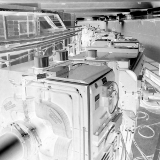Speaker
Mario Gai
(Istituto Nazionale di Astrofisica)
Description
Authors:
M. Gai, A. Vecchiato, A. Riva, D. Busonero, M.G. Lattanzi
Ist. Naz. di Astrofisica - Osservatorio Astrofisico di Torino
High precision astrometry at the microarcsecond level is a promising tool
for Fundamental Physics tests in the Solar system, reaching a sensitivity
adequate to set stringent constraints on the competing theories of
gravitation, including General Relativity, and on effects induced by
quantum mechanics related phenomena.
In the weak field limit of gravitation applicable to the Sun neighborhood,
General Relativity and competing gravity models can be expressed in a
common framework, in particular the Parametrised Post-Newtonian (PPN)
and Parametrised Post-Post-Newtonian (PPPN) formulations.
Micro-arcsec astronomy is able to verify the predictions of theoretical
models of gravitation by a modern rendition of two Einstein’s classical
tests: deflection of the light around the Sun, and perihelion precession
of Mercury and other orbiting bodies.
Local constraints on gravitation have also implications on fundamental
principles like the Equivalence Principle and the Local Lorentz invariance
and, through extrapolation at cosmological level, on the distribution of
Dark Matter and Dark Energy.
Astrometric Gravitation Probe (AGP) is the concept of a space mission for
gravitation tests in the Solar system through
coronagraphy and Fizeau interferometry for differential astrometry.
The equivalent precision goal on the "$\gamma$" and "$\beta$" PPN parameters
is respectively in the $10^{-8}$ and $10^{-6}$ range.
The design is focused on systematic error control through multiple field
simultaneous observation and calibration.
The main science goals of AGP are presented, as well as the measurement
approach and a sketch of the implementation concept.
Author
Mario Gai
(Istituto Nazionale di Astrofisica)
